
|
You entered: map
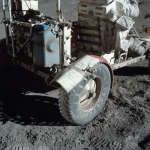 Lunar Dust and Duct Tape
Lunar Dust and Duct Tape
13.12.2022
Why is the Moon so dusty? On Earth, rocks are weathered by wind and water, creating soil and sand. On the Moon, the history of constant micrometeorite bombardment has blasted away at the rocky surface creating a layer of powdery lunar soil or regolith.
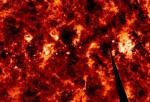 The Frothy Milky Way
The Frothy Milky Way
2.05.1998
Astronomers have discovered that looking at dust along the plane of our Milky Way Galaxy is a bit like looking into a frothy glass of beer. The dust between stars in our galaxy appears...
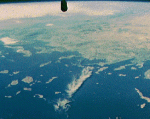 Aristarchus' Unbelievable Discoveries
Aristarchus' Unbelievable Discoveries
14.09.1996
Here lived one of the greatest thinkers in human history. Aristarchus lived on the Greek island of Samos, a small island in the center of the above picture that can be identified with a good map.
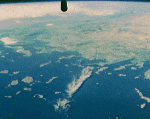 Aristarchus' Unbelievable Discoveries
Aristarchus' Unbelievable Discoveries
7.11.1997
Here lived one of the greatest thinkers in human history. Aristarchus lived on the Greek island of Samos, a small island in the center of the above picture that can be identified with a good map.
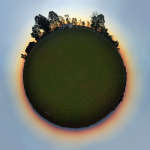 Little Planet Shadowrise
Little Planet Shadowrise
24.10.2013
Warm shades and subtle colors come to the sky in the fading sunlight after shadowrise on this little planet. Of course the little planet is planet Earth, and this nadir-to-zenith, around-the-horizon mosaic maps the view from a small airfield near the town of Intendente Alvear, La Pampa province, Argentina.
 The Frothy Milky Way
The Frothy Milky Way
9.10.1999
Astronomers have discovered that looking at dust along the plane of our Milky Way Galaxy is a bit like looking into a frothy glass of beer. The dust between stars in our galaxy appears...
 The Frothy Milky Way
The Frothy Milky Way
24.04.1997
Astronomers have recently discovered that looking at dust along the plane of our Milky Way Galaxy is a bit like looking into a frothy glass of beer. The dust between stars in our galaxy...
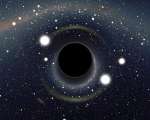 Too Close to a Black Hole
Too Close to a Black Hole
6.12.2010
What would you see if you went right up to a black hole? Above is a computer generated image highlighting how strange things would look. The black hole has such strong gravity that light is noticeably bent towards it - causing some very unusual visual distortions.
 APOD Heatmap
APOD Heatmap
16.06.2014
The first APOD appeared 19 years ago today. To help celebrate, APOD brings you today an all-sky heatmap of (nearly) 19 years of APOD entries. The brighter a region appears on the above heatmap, the more APODs that occur in that region.
 Billows of Smog in the Outer Galaxy
Billows of Smog in the Outer Galaxy
14.01.2001
Our Galaxy is filled with gas. Most of this gas is hydrogen, some is helium, but there is a trace amount of relatively heavy molecules, including carbon monoxide (CO) - a component of smog. The above wide-angle radio CO image shows the incredibly diverse structures that the molecular interstellar medium forms.
|
January February March April May June July |
|||||||||||||||||||||||||||||||||||||||||||||||||